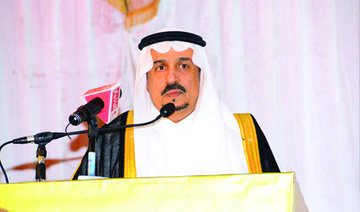DAVOS: Saudi Arabia is planning for a dramatic increase in the population of the capital, Riyadh, to make it a “mega-metropolis” in the Middle East, Arab News can reveal.
Speaking on the sidelines of the World Economic Forum annual meeting in Davos, Fahd Al-Rasheed, who last November took up the role of president of the Royal Commission for Riyadh - the city’s ultimate planning and development authority - said that the population could double by 2030, with planned population growth of 8 per cent per year.
“Riyadh is already the biggest urban economy in the region, but with the scale and leverage this plan bring will turn it into a mega-metropolis,” Al-Rasheed said.
“What we’re going to see in Riyadh is an economic revolution the like of which the world has not seen.”
The master plan for the city will also involve a change of lifestyle and image for the Kingdom’s capital. “It is not just about growth, but about the quality of growth,” Al-Rasheed said.
“The aim is to make Riyadh a more sustainable, mobile and livable city, with family facilities, sports, events, health facilities and schools.”
He added that the Royal Commission is planning some 424 initiatives of varying sizes over the next decade, and the aggregate value of projects amounted to $55 billion (SR 206.25 billion).
Al-Rasheed said the projects would be built via public and private sector initiatives, and he would welcome foreign participation in the projects.
There have been several mega-projects under way in the capital for some time, and Al-Rasheed is planning to prioritize completion of some of these in the next 12 months.
He said that the Riyadh Metro and the King Abdullah Financial District projects would be “soft-launched” in time for the G20 meeting of global leaders in November.
“Big parts of KAFD are already occupied, commercial and residential, but these are very complex projects. The Metro involves a space of 4 million square meters, most of that underground,” he said.
We will see an economic revolution in Riyadh the like of which the world has never seen.
Fahd Al-Rasheed, President, Royal Commission for Riyadh
 Other big developments to transform the city are the Green Riyadh project, which involves the planting of a tree for each of the current population, which would make the capital “as green as London” and also help reduce temperatures.
Other big developments to transform the city are the Green Riyadh project, which involves the planting of a tree for each of the current population, which would make the capital “as green as London” and also help reduce temperatures.
Riyadh has grown on average at around 4 per cent per year over the past two decades, and currently has a population of around 7 million.
“We are already adding 300,000 residents per year,” Al-Rasheed said.
“It is a very exciting project because it represents the future of the capital of the Kingdom.”
Under Al-Rasheed as chief executive, the King Abdullah Economic City on the Red Sea coast became one of the most successful developments in the region.
“KAEC has the second largest commercial port in the Kingdom, the most successful non-oil industrial zone in the country, as well as a diverse residential community with world class sports and events,” he said.
The plan to grow the Riyadh is the latest of the mega-projects of the Vision 2030 strategy to diversify the country away from oil dependency, in the same league as the Red Sea Development, the Neom project in the northwest, and the Qiddiya leisure resort south of the capital.
Last week, Arab News revealed that Khalaf Al-Habtoor, the UAE property and leisure tycoon, was planning a huge development in Riyadh involving parks, hotels, lakes and recreation facilities.
Riyadh, which was made the capital city when the Kingdom was established in 1932, is one of the fastest grown in the Arab world.
Over the past two decades its population has doubled as the Kingdom’s economy boomed on rising oil prices and, more recently, as the hub for the Vision 2030 transformation of the Saudi economy.
The Royal Commission was set up last year to replace the Riyadh Development Authority.
In addition to the Metro and the KAFD, it oversees several other urban initiatives, including the historical Addiriyah development program and the King Abdulaziz Historical Center Project.




























